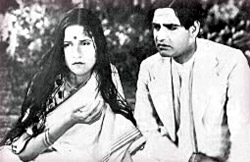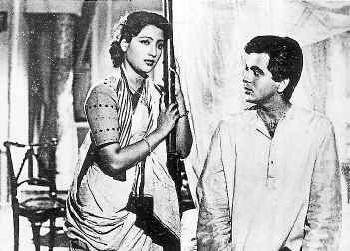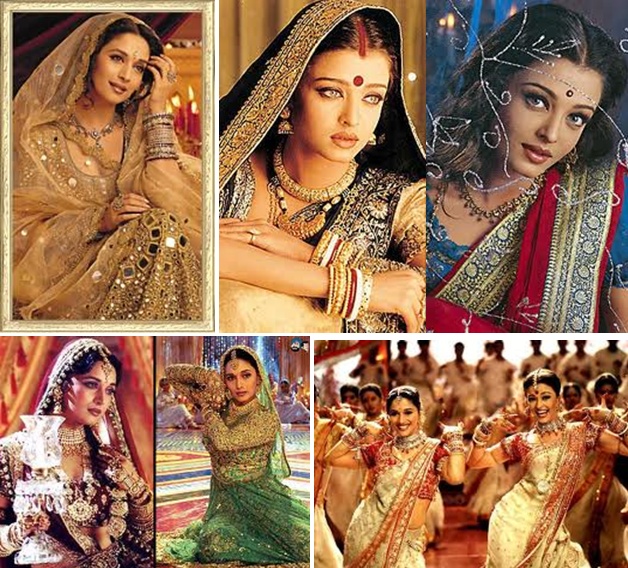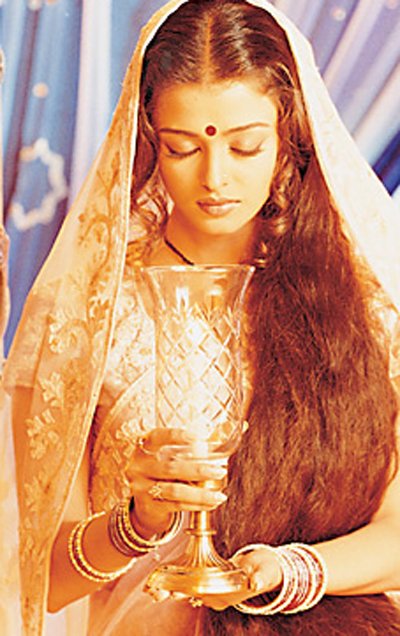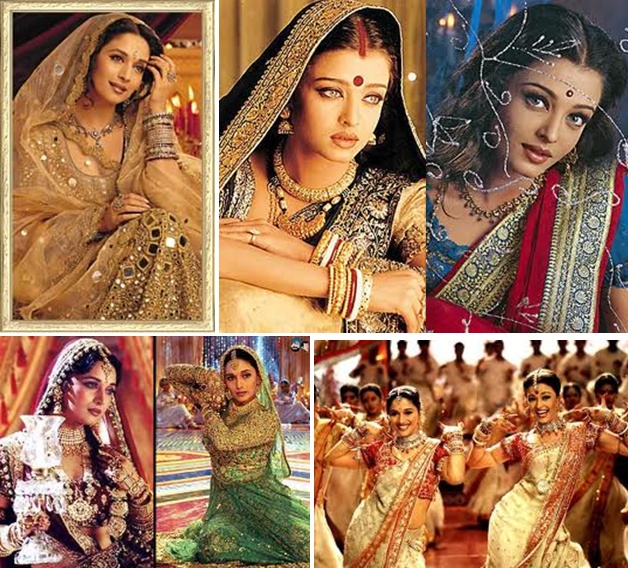
Devdas Old vs New
Old wine in a new bottle, one might say! Devdas is an epic tale of Bengali romance that is based on the novel by Sarat Chandra Chattopadhyay which highlights the tumultuous relationships between its three protagonists: Devdas, Chandramukhi and Parvati (or Paro) and draws parallels to popular Indian mythological characters, Lord Krishna,
Devdas is an epic tale of Bengali romance that is based on the novel by Sarat Chandra Chattopadhyay which highlights the tumultuous relationships between its three protagonists: Devdas, Chandramukhi and Parvati (or Paro) and draws parallels to popular Indian mythological characters, Lord Krishna, Radha and Meera. This popular love story has seen many adaptations over decades in India and has been made in regional languages too. However, the three popular Hindi versions of Devdas were released in 1936 (K.L. Saigal as Devdas), 1955 (Dilip Kumar as Devdas) and 2002 (Shah Rukh Khan as Devdas).
Indian cinema has given new dimensions to Devdas with its various adaptations across the years with grand Bengali sets and opulent costumes to display real Bengali glamor and elegance of pre-independence Bengal that was the hub of culture, music, dance, drama and textiles. The only marked difference in the numerous versions of Devdas is that the more recent one is dotted with more elaborate sets and the makers have kept a keen eye for detail in order to make the story seem as authentic as possible.
The three protagonists of Devdas have also undergone drastic changes in terms of attire over the three different movies shot in different eras of Indian cinema. For instance, the very first and second Devdas films have been shot with austerity wherein the costumes are used to enhance the element of traditional Bengali culture by keeping it simple and using handloom cotton Bengali saris for Paro and Chandramukhi with subtle jewelry. However, come 2001 and the Shahrukh-starrer Devdas was a complete foil to what we had earlier seen, with dress designers who were hired to dress up the protagonists after a lot of research. Sanjay Leela Bhansali, the director, chose the path of unabashed opulence to highlight the three characters by having Abu Sandeep dress up Chandramukhi (Madhuri Dixit) in great finery by using Banarasi brocades, embroidered blouses, silks, jadau and gold ornaments.
Origin and History
Devdas originally started off as a novel written by Sarat Chandra Chattopadhyay that was later turned into a Hindi film in three different eras: 1936, 1955 and 2002. The first movie starred the legendary K.L. Saigal as Devdas, who sang his own songs and lent the movie the charm of honest cinema. The second version starred the superstar of those times, Dilip Kumar, as Devdas whose presence livened up the silver screen and made the movie a resounding success. The latest Devdas film starred the ‘King of Bollywood’ Shahrukh Khan wherein he displayed his famed antics and managed to portray the conflict, drama, love, anguish and catharsis to portray the ethos of Devdas. Director Bimal Roy’s representation of Devdas which was based on Sharat Chandra Chattopadhyay’s novel was simple and serene, and void of glamor. The film was made in 1955 and Bollywood actors Dilip Kumar, Suchitra Sen and Vyajanthimala were the leading characters. The film upholds Bengali culture and the traditional outlook while keeping alive the essence of the story in the simplest of settings. No grand display of costumes, no ornate sets, no heavy makeup, and no glitter and glamor. The story of Devdas from the 1955 version is less of a fairytale, and more of a lover’s tragic account. The black and white cinematography adds to the uncomplicated visual effect that the movie has in terms of its style and appeal.
Devdas Across 3 Decades
Devdas has been reinvented and resurrected over three distinct eras, wherein the essence of the self-destructive and narcissistic Devdas remains unaltered and so does the storyline of his tragedy. However, the three different actors who have portrayed this epic character have given it shades that have made each Devdas distinctively different and unique in style and essence. The very first Devdas portrayed by Kundan Lal Saigal is a very simple film that stays true to most of the novel written by Sarat Chandra Chattopadhyay in terms of how he appeared upon his return from England and how he later converted to traditional wear during his days of alcoholism and despondency. The western attire with the full suit, tie, shoes, hat and walking stick are all present and so is the crispness in the traditional Bengali dhoti, kurta and shawl- but that is secondary to the performance and music of the film.
The second version of Devdas which was directed by the legendary director Bimal Roy is perhaps the most authentic adaptation of the book and does poetic justice to the essence of Devdas. Devdas, portrayed by Dilip Kumar, has been the most influential and the entire film exudes a Bengali sensibility of cinema like that of Satyajit Ray. The settings are natural instead of lavish sets, therefore the movie is more believable. Likewise, Devdas is also shown to be dressed in western attire that is elegant and sophisticated- but not over the top. Same is for his traditional attire that has been designed to exude a typical Bengali charm of that era. However, the most recent Devdas, Shahrukh Khan has perhaps been the most grandest of the lot with Abu Jani creating both the western and traditional outfits. There has been a keen eye for details when it comes to the colors, the cotton and silks of Bengal, the chikankari embroidery work on the kurtas, the typical golden buttons of the suit, the hat, the English overcoat and the polka-dotted bow-tie. Opulent is what describes the attire of the most recent Devdas.
Paro Vs. Paro
Paro or Parvati is the quintessential character that has a joint destiny with the main protagonist of the film, Devdas. Paro’s portrayal in the 1936 film is a very raw representation of the character in the novella by Chattopadhyay, but the movie is largely about Paro and defies the title ‘Devdas’. She is dressed in simple Bengali cotton sarees draped in the typical manner of the region. The movie is more focused on story telling through emotions, speech-like dialogues and songs rather than clothes, jewellery and settings. Paro from Bimal Roy’s 1955 version of Devdas is an embodiment of charm, simplicity and grace. Her authentic costumes are reminiscent of the setting of the story. The flowing cottons and silks with the traditional borders, big red bindis and ornaments have been depicted in a manner that would make them relive that era. However, things were taken much further in terms of attire and jewelry when Sanjay Leela Bhansali chose to heighten the glamor quotient and portray a fantasy-like element to the tale with its larger than life characters. What one may remember of Paro from the 1955 version would be a simple and innocent looking Suchitra Sen in her simple Cotton Bengali sari with the red bindi and kohled eyes. On the other hand, what comes to mind of the new age Paro is Aishwarya Rai’s immaculate screen presence in her lustrous sarees, heavy gold jewellery and glamorous makeup, furthermore all the details are easily visible now than in the previous black-and-white movies.
Chandramukhi Vs. Chandramukhi
Chandramukhi too has undergone a metamorphosis to what she was presented like in the 1936 movie, which can be an authentic representation of the character in terms of attire as she exuded simplicity and grace in typical Bengali sarees. Vijyanthimala took the character of Chandramukhi further in the 1955 version and gave her an added glamor in her ornate lehangas and dupattas along with exquisite jewelry befitting a courtesan in Bengal during the pre-independence era. To a certain extent the clothes that have been worn are said to be authentic as possible because Bimal Roy was a perfectionist. However, Chandramukhi that has been played by Madhuri Dixit in the Bhansali magnum opus gives the character a dream-like quality that is almost unattainable. The costumes that range from her famous green dress worn in ‘Maar Daala’(which apparently weighted 30 kgs) and the epic red and white Bengali saree worn in ‘Dola re’ is something that transcends the boundaries of reality and adds a fantasy-like element.
Chronicles of the Future Untold
Devdas is a popular film with global appeal, this is the reason why it has been remade so many times and will be remade once again. In fact, there was a movie that was released a while ago by the name of DevD, which was again a modern take on the same characters in an uber modern setting with the protagonists donning western attire. A modern Devdas of the 21st century would be more than an alcoholic and would exude the qualities of a metrosexual male. The clothing of Devdas would be contemporary casual, yet extremely stylish. Likewise, the modern Paro and Chandramukhi will be dressed in modern Western costumes that have some Indian/Bengali accents to it. ‘Less is more’ is most certainly the mantra of modern cinema, hence the minimalist look of the characters would be a far cry from Bhansali’s saga of opulence in Devdas 2001!
Interesting Facts and Comparisons
- Each outfit designed for Madhuri Dixit in the new version of Devdas cost around 15 lakhs.
- Madhuri Dixit and Aishwarya Rai shared the screen in a song sequence for the first time in their hit classic ‘Dola re dola’, in the movie Devdas.
References
Categories: Bollywood & Beyond, Indian Cinema

